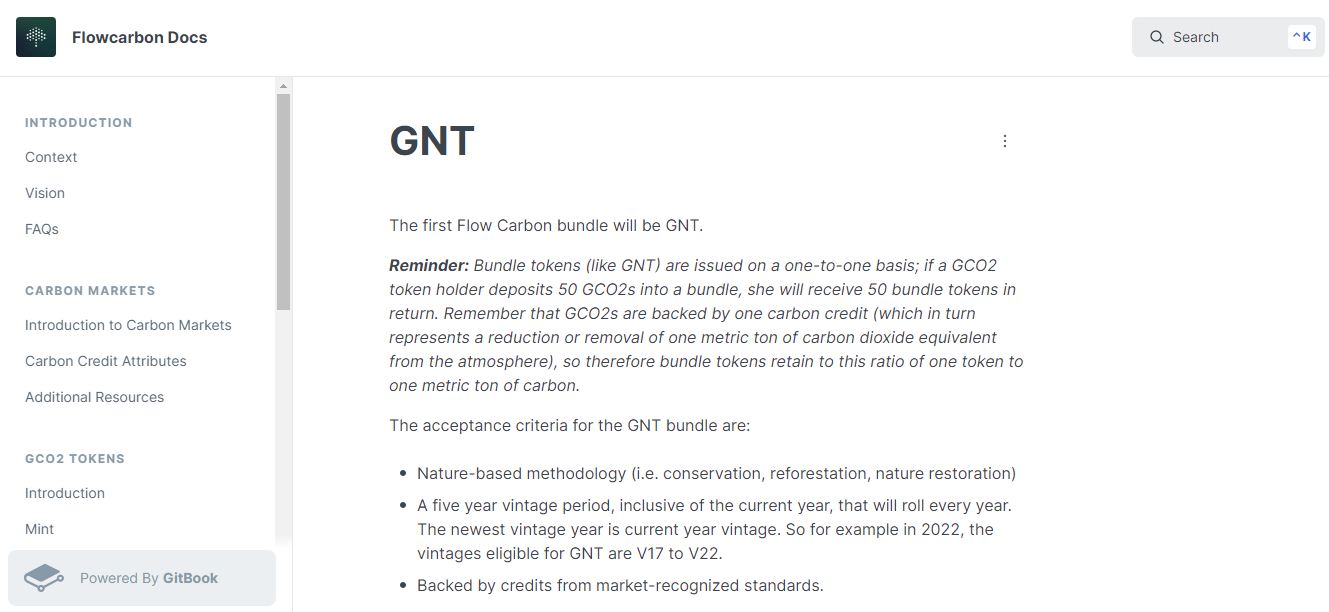The Genesis of Regen Network
Established in 2017 by Gregory Landua and Christian Shearer, Regen Network encompasses two primary entities: Regen Network Development, Inc., a for-profit corporation, and Regen Foundation, which is applying for non-profit status. This unique structure blends the innovative drive of a private corporation with the selfless commitment to the public good of a non-profit. Landua is a globally recognized permaculture designer, and Shearer is an expert in ecological project management.
The vision of Regen Network is to create a global community that regenerates the earth’s ecosystems. The mission of Regen Network is to facilitate verifiable ecological outcomes through a systemic multi-stakeholder, market-driven solution that leverages blockchain technology.
Carbon credit standard
To register a climate project on the Regen Network, project proponents must follow the Program Guide and apply a Regen Registry approved credit class and methodology. The Regen Network accepts projects from locations worldwide, provided they conform to an approved credit class and its respective methodology.
However, Regen Registry may permit modifications to an existing approved methodology where they do not negatively affect the conservativeness of the methodology’s approach to determining additionality and quantification of GHG removals and co-benefits.
If you have developed your own methodology, you can submit it to Regen Registry for review and approval. Regen Registry actively identifies and qualifies candidate reviewers, and publicly solicits applications from interested parties.
If you wish to use methodologies from other carbon standards, you should check with Regen Registry to see if they are approved for use on the Regen Network.
Regen Registry does not require an ex-ante GHG estimate in the Project Plan and therefore validation is not necessary. Instead, the verifier validates the project eligibility according to the rules defined in the Program Guide, Credit Class, and the Approved Methodology. In the context of the Regen Registry, verification is the systematic, independent, and documented assessment by a qualified, impartial third-party of the GHG and Co-Benefits assertion for a specific reporting period. The verification process involves several steps, including:
1. Project Proponent submits a Project Plan to Regen Registry for review and approval.
2. Project Proponent engages a third-party verifier to conduct a verification of the project.
3. Verifier conducts a site visit to the project location and reviews project documentation, including monitoring data, to assess the project’s eligibility and compliance with the approved methodology.
4. Verifier prepares a verification report that includes a summary of the verification process, findings, and conclusions.
5. Regen Registry reviews the verification report and issues credits to the Project Proponent if the project meets the eligibility and compliance requirements.
It is important to note that the Regen Registry seeks a balance between adequate assurances, the overhead, and costs associated with verification. Therefore, each Credit Class can stipulate the requirements that are best suited to the ecosystem, best management practice, and/or locale(s) it pertains to.
Seller of carbon credits
Once carbon credits are issued to a project proponent, they can be sold or traded on the Regen Registry marketplace or other secondary markets.
Credit buyers have access to the Project Proponent’s information, the project location, monitoring reports, and other pertinent data which is made publicly available on Regen Registry. Buyers must indicate the owner of the beneficial interest in the GHG mitigation claim for each credit they retire.
It is important to note that credits can only be retired once. Once a credit has been retired, it cannot be transferred or sold anymore. Credit buyers will have the option to sell their credits so long as they have not yet been retired. Credits are treated as commodities, not as securities.
Unpacking the Blockchain Aspect of Regen Network
The Regen Ledger is the public blockchain, where all the data and transactions of Regen Network are stored and managed. Its main mission is to act as the transparent balance sheet and to create a global ecological accounting system that can incentivize shifts in land use towards more regenerative practices
Three core elements of Regen Ledger:
• Ecological State Protocols (ESPs) help understand or verify the ecological condition or changes in condition on a piece of land. For example, it could be a measure of the amount of carbon stored in a certain area within a certain time frame.
• Ecological Contracts (ECs) are agreements that enable funding and incentivizing specific ecological results.
• Supply Protocols (SPs) are a set of rules and algorithms that are used to track and assess the ecological supply chain data within Regen Ledger. The SPs are built on top of the Ecological State Protocol framework. The SPs allow for more sophisticated assessment of verified ecological supply by taking into account not only land use data but also supply chain tracking data. This means that the SPs can help to ensure that the ecological supply chain is transparent and that the ecological outcomes are verified.
Data is crucial for this system. It allows us to verify claims and establish trust in the ecological state of the land. Regen Network uses a variety of data sources, such as satellite imagery, IoT sensor data, public GIS datasets, and user-submitted data like soil test results
The Regen Network’s operations are powered by a native network token known as the Regen Token ($REGEN). The token is native to the Regen Ledger and has multiple uses, such as staking on validators to secure the network, providing access to trusted data that powers protocols and applications, and rewarding ecological outcomes. The inflation of $REGEN tokens IS between 7% and 20%, relative to the percentage of tokens staked.
The Regen DAO is a decentralized autonomous organization that is designed to govern the Regen Ledger. It is a community-driven governance model that allows for the community to have a say in the development and direction of the Regen Ledger. The Regen DAO is made up of various constituency groups, including the Regen Consortium and the Community Staking Pools, which are responsible for managing and staking a portion of the $REGEN tokens.
Investments
Regen Network Development, Inc successfully completed Phase 3 of their private token sale, raising over $10.5 million from 216 unique investors. The total supply of REGEN tokens at the mainnet launch was 100 million, with 35% permanently locked for Regen Foundation and Community Staking DAOs. The latest round of the private sale had the tokens priced at $0.46 per token for a three-year lock-up period and $0.63 per token for a one-year lock-up, which resulted in a market cap of $40.95 million.










